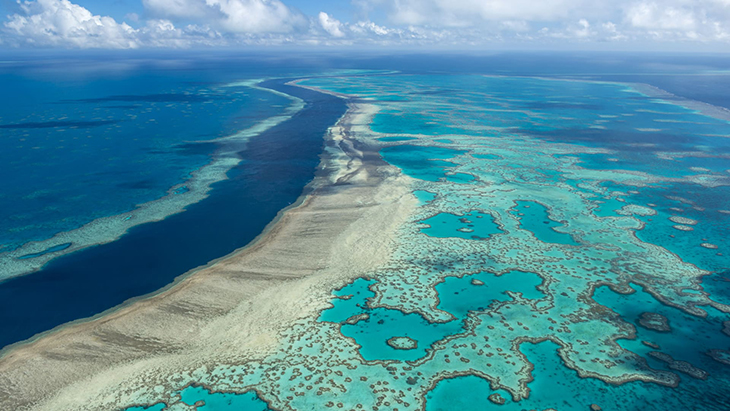
Years ago, people were concerned about the Great Barrier Reef. While it still remained beautiful, it has lost a good significant amount of underwater life. Part of this was brought about by global warming. Environmental groups had to put their heads together to see what they needed to do.
Many took action. After all, the reef gets thousands of visitors each month. This was a famous tourist attraction, and for good reason too. The good news is that they have seen wonderful improvements, which gives them hope for the reef’s future.
The northern and central Great Barrier Reef have seen many changes, and recently, they have recorded their highest amount of coral cover since the Australian Institute of Marine Science started looking into it 36 years ago.
The findings have been published recently and the group’s Annual Summary Report on Coral Reef Condition for 2021/22 shows that there was an increased amount of coral cover across a large portion of the reef this year. In fact, some areas showed increases of 7 to 9 percent.
A total of 87 representative reefs were surveyed between the months of August 2021 and May 2022. This was done with a Long-Term Monitoring Program and they saw that the average hard coral cover in the region north of Cooktown increased to as much as 36 percent this year and 27 percent from 2021. As for the central Great Barrier Reef, there was a 33 percent increase of this year and 26 percent from 2021.
Unfortunately, it wasn’t good news for every area. The average coral cover in the southern region decreased by about 4 percent in the similar time period set.
AIMS CEO Dr. Paul Hardisty talked about the results in the north and central regions and he said that they consider this as a sign that the reef can still recover. Of course, he also gave a warning about the higher frequency of coral bleaching events. The corals bleach themselves as a response to stressful conditions, among which is heat. Still, they will still be able to survive from this.
“A third of the gain in coral cover we recorded in the south in 2020/21 was lost last year due to ongoing crown-of-thorns starfish outbreaks,” he said. “This shows how vulnerable the Reef is to the continued acute and severe disturbances that are occurring more often, and are longer-lasting.
Dr. Hardisty also talked about this increased frequency of mass coral bleaching events and he said that this was “uncharted territory,” with this year’s bleaching event being the fourth that has happened in seven years. The first time this was observed was during a La Niña.
“In our 36 years of monitoring the condition of the Great Barrier Reef we have not seen bleaching events so close together,” he said. Every summer the Reef is at risk of temperature stress, bleaching and potentially mortality and our understanding of how the ecosystem responds to that is still developing. The 2020 and 2022 bleaching events, while extensive, didn’t reach the intensity of the 2016 and 2017 events and, as a result, we have seen less mortality. These latest results demonstrate the Reef can still recover in periods free of intense disturbances,” he added.
Dr. Hardisty also talked about what they know. He says that how the ecosystem responds to bleaching is still developing. “The 2020 and 2022 bleaching events, while extensive, didn’t reach the intensity of the 2016 and 2017 events and, as a result, we have seen less mortality,” he shared in a recent release.
As for the AIMS monitoring program team leader Dr. Mike Emslie, he said that the 2022 results were based on the increases in coral cover that have been reported for 2021, with most of it continuing to be supplemented and generated by fast-growing Acropora corals. “These corals are particularly vulnerable to wave damage, like that generated by strong winds and tropical cyclones,” he explained.
As they had hoped, these latest results give them hope. They took this as a sign that the reef will still be able to recover during times that went without great disturbances.
As for the south part of the reef, a third of the gain in coral cover recorded the last year was not successful because of the crown-of-thorns starfish outbreaks that are still happening, according to the report. This has been the largest, the longest playing, and the most complete information source on the health of the Great Barrier Reef at this point in time.
What are your thoughts? Please comment below and share this news!
True Activist / Report a typo


